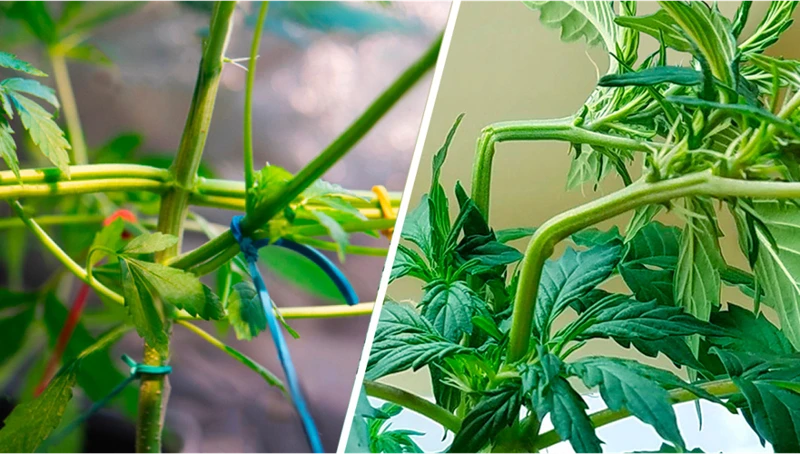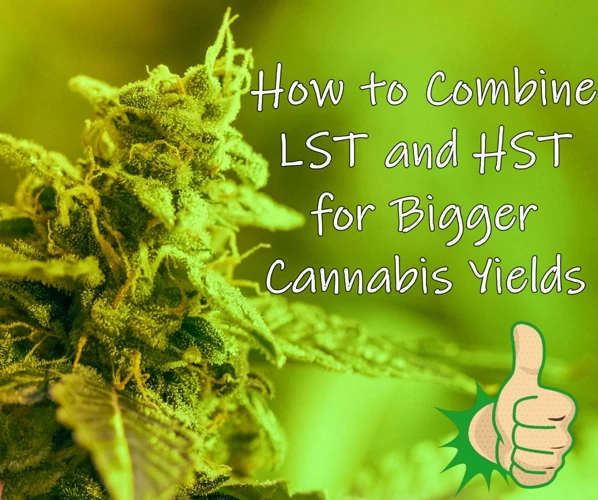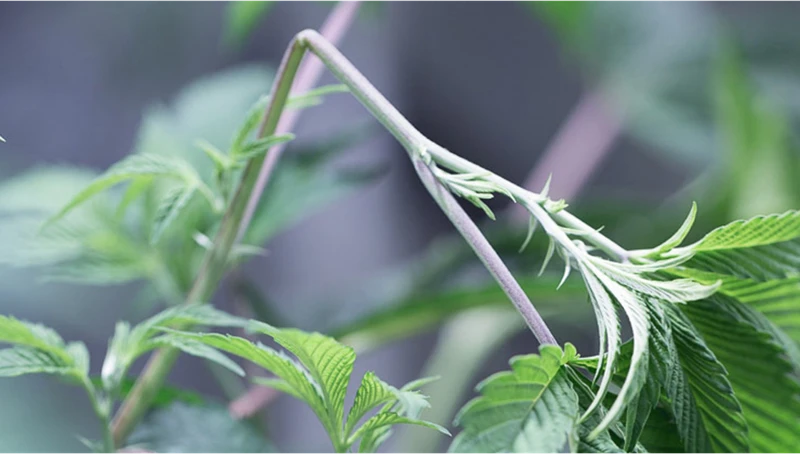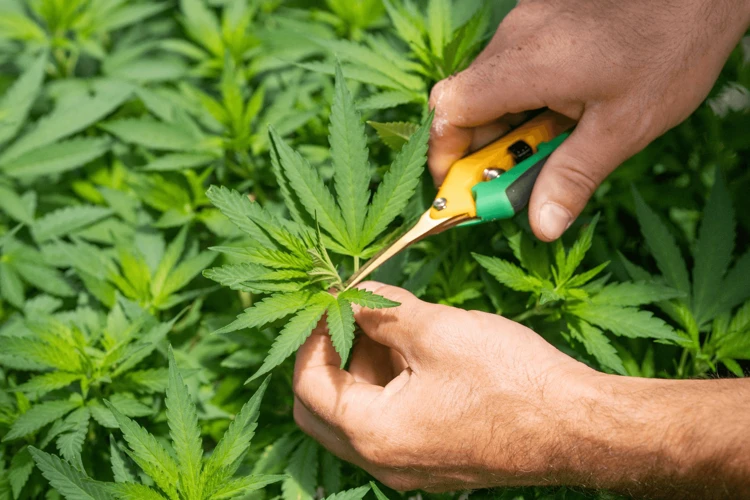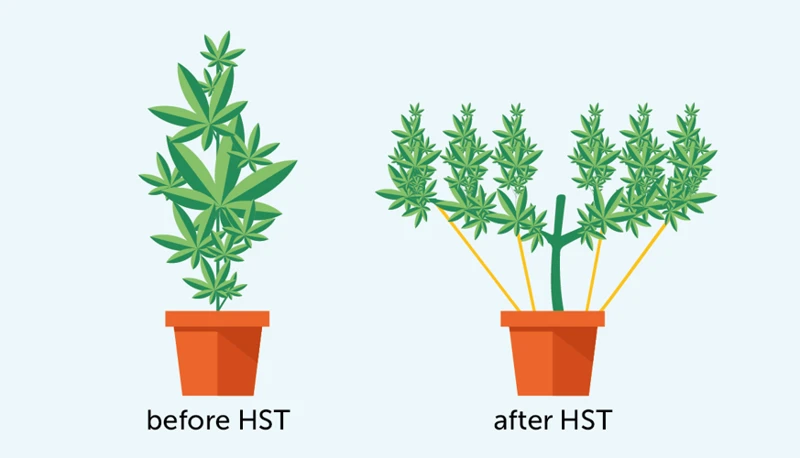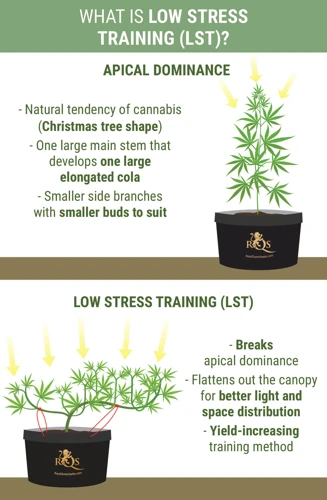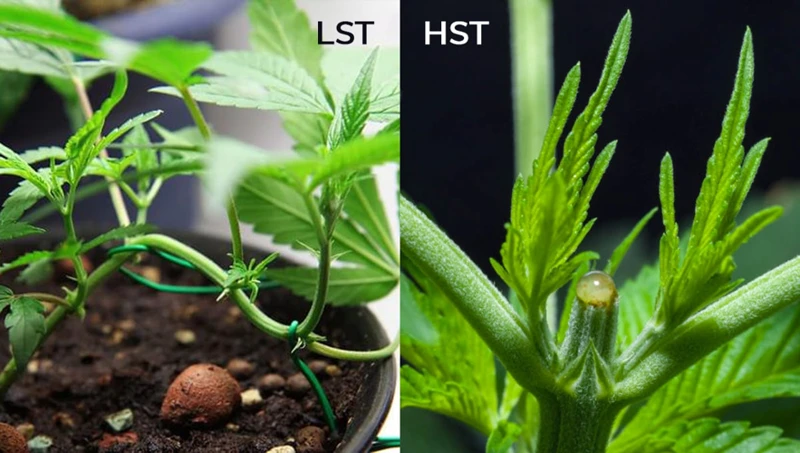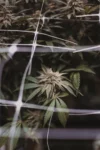
Which is the Better Training Technique for Heavy Yielding Cannabis Plants?
When it comes to growing heavy yielding cannabis plants, plant training is a must. But with so many techniques out there, it can be difficult to know which one to choose. Two popular techniques are HST (High-Stress Training) and LST (Low-Stress Training). So, which one is the better training technique? In this article, we will go through the pros and cons of both HST and LST, the factors to consider when choosing between them, the tools and techniques for each, how to implement and maintain them, and provide examples of each. We will also share some tips for achieving heavy yields with your cannabis plants. By the end of this article, you will have a better understanding of HST vs LST and be able to choose the right technique for your growing needs.
What is Plant Training?
Contents
Cultivating cannabis plants is an art and science that involves various techniques to improve their yield and quality. One such technique is the practice of plant training, which involves shaping the growth of cannabis plants to optimize their production. By employing plant training techniques, growers can manipulate the structure of their cannabis plants to boost yields, improve the quality of buds, and enhance the overall health of the crop. In this article, we will explore two of the most popular plant training methods used by growers- High-Stress Training (HST) and Low-Stress Training (LST). We will discuss the pros and cons of each technique, the factors to consider when choosing between them, the tools and techniques involved, and how to implement and maintain HST and LST for heavy yielding cannabis plants.
What is HST?
HST, or High Stress Training, is a plant training technique that involves creating intentional stress on the plant to redirect growth and achieve better yields. This technique usually involves the use of cutting, pinching or breaking the plant in a bid to inhibit its growth and ultimately force it to grow in a new direction.
The following table outlines some of the key aspects of HST:
| Pros | Cons |
|---|---|
| Increase in yield due to increased production of bud sites | Increases the risk of plant damage and shock, which may lead to stunted growth or reduced yields |
| Fast recovery time, and plant adaptation to stress translates to a stronger plant | Requires significant effort and knowledge to ensure that the technique is carried out well with little damage |
| Good for plants with dense foliage | May not work effectively for plants that are already under stress |
| Allows for a more structured canopy and better light penetration | Better suited for experienced growers who have the knowledge to carry out the technique |
| Helps to control plant height and increase overall yield potential | May result in reduced potency of final product |
It’s worth noting that HST is a technique requiring precision, knowledge and experience in order to achieve maximum yield. It may not be recommended for beginners, especially those who haven’t had much success with other training techniques.
What is LST?
LST or Low Stress Training is a plant training technique that involves gently bending and tying down the plant’s branches to create a more horizontal canopy. This technique requires less cutting and damage to the plant compared to HST. With LST, the goal is to expose more of the plant to direct light, creating an even canopy to promote growth and maximize the yield. Here are some key points to keep in mind about LST:
- It is a gentle technique that involves minimal cutting or damage to the plant, making it a more forgiving technique for beginners
- LST helps create an even and open canopy that allows better light penetration and air circulation, improving overall plant health
- This technique allows for more buds sites, and thus, more buds, leading to an increased yield of high-quality colas
- Since LST requires less cutting and damage to the plant, it reduces the risk of introducing diseases or pests through open wounds, keeping the plant healthy and vibrant throughout its life cycle
- LST is most effective when started during the vegetative stage when the plant is more flexible and can be trained easily
LST is a gentle training technique that can help maximize the yield of cannabis plants by creating an even and open canopy that promotes optimal growth and health. By bending and tying down branches, growers can create more bud sites, and thus, more high-quality colas, without causing excessive damage to the plant.
Pros and Cons of HST
When it comes to training heavy yielding cannabis plants, there are various techniques available, and one of them is High-Stress Training (HST). While this technique can have several benefits, it also has some drawbacks that growers need to consider. Let’s explore the advantages and disadvantages of HST in detail, so you can make an informed decision whether it’s right for you and your cannabis plants.
Pros
Some of the pros of using High-Stress Training (HST) for cannabis plants include:
- Increased Yield: By subjecting the plant to stress, HST can increase the yield produced by the plant. This is because the plant will produce more bud sites and therefore more buds, resulting in a higher overall yield.
- Control over Plant Shape and Size: HST allows the grower to control the shape and size of the plant. By strategically damaging certain parts of the plant, the grower can encourage the plant to grow outwards instead of upwards, resulting in a wider and shorter plant. This can be particularly useful for growers with limited grow space.
- Shorter Vegetative Phase: HST can also result in a shorter vegetative phase for the plant. This is because the damage caused by HST triggers the plant to focus on repairing itself instead of continuing to grow upwards. This can save the grower time in the overall growing cycle.
- Increased Light Intensity: HST can lead to increased light intensity on the lower parts of the plant. By manipulating the shape of the plant, the grower can ensure that more light is able to reach the lower bud sites, resulting in bigger and better buds.
It is important to note that while HST can have these positive effects on plant growth, it can also create some negative effects, which will be discussed in the next section.
Cons
Like any other training technique, HST also has its downsides. Here are some of the cons of using HST:
| Cons of HST |
| 1. High stress level – As the name suggests, HST is a high-stress training technique. It involves cutting the plant or damaging its structure to promote growth. This can cause stress to the plant and affect its overall health and yield. |
| 2. Risk of plant damage – HST requires precision and care, and any mistake can lead to severe damage or even death of the plant. It is crucial to follow the correct technique and give the plant time to recover from the stress. |
| 3. Requires more experience – HST is a more advanced technique compared to LST and requires more experience, knowledge, and skill. It may not be suitable for novice growers or those with limited experience in training cannabis plants. |
| 4. Longer recovery time – HST can take a longer time for the plant to recover from the damage caused by the technique. This can delay the growth and affect the overall yield. |
It’s important to consider the cons of HST before deciding whether it is the best training technique for your cannabis plants. While it can have a significant impact on the yield, it also requires more care, precision, and experience to execute correctly.
Pros and Cons of LST
When it comes to training cannabis plants, low-stress training (LST) has become a widely adopted technique among growers. By applying gentle pressure on the plant’s main stem and branches, LST aims to lower the overall height of the plant and increase its lateral growth. As with any other growing method, LST has its advantages and disadvantages, and it’s essential to understand them to determine if it’s the right technique for your cultivation goals. Let’s dive into the benefits and drawbacks of LST.
Pros
When it comes to using the HST technique for plant training, there are some notable pros to consider. Here are a few advantages:
| Increase in yield: | The HST technique can lead to a significant increase in yield, as it stresses the plant and encourages it to produce more buds. |
| Control over shape: | With HST, growers have more control over the shape of their plants. This can be especially useful for growers who have limited space. |
| Shorter vegetative phase: | By stressing the plant and encouraging it to start flowering earlier, HST can lead to a shorter vegetative phase. This means faster overall growth and shorter time to harvest. |
| Variety of techniques: | There are a variety of HST techniques to choose from, meaning growers can experiment and find the one that works best for them and their plants. |
Of course, there are also some cons to using HST. These include the risk of damaging the plant if the technique is not done correctly, and the fact that it can require more maintenance than some other methods. However, for many growers, the benefits outweigh the potential drawbacks, making HST a popular choice for training cannabis plants.
Cons
When considering High-Stress Training (HST) as a technique for training cannabis plants, it’s important to take into account some of the potential drawbacks. Here are some of the disadvantages of using HST to train your heavy yielding cannabis plants:
| Cons |
| HST can be stressful for the plant and may cause stunted growth or even death if performed incorrectly. |
| It requires a lot of maintenance and attention to detail in order to achieve the desired results. |
| It is not recommended for inexperienced growers, as it can be difficult to master. |
| The recovery time after performing HST is generally longer than for Low-Stress Training (LST), which means longer time to harvest. |
| HST may not be as effective for some cannabis strains as it is for others. |
While HST can be an effective technique for training cannabis plants to produce heavy yields, it’s important to weigh the potential disadvantages before deciding whether or not to use this technique. Inexperienced growers may find that LST is a better option for their needs, as it is generally easier to perform and has a shorter recovery time.
Factors to Consider when Choosing between HST and LST
When it comes to training cannabis plants, there are various methods to choose from. However, the decision between HST and LST ultimately depends on several crucial factors. These include the type of cannabis strain, the available grow space, the current growth stage, and the grower’s personal preferences. Understanding these factors can help you choose the most suitable training technique and maximize your yield potential. Let’s take a closer look at each of these factors in detail.
Cannabis Strain
When it comes to choosing between HST and LST for training your cannabis plants, one important factor to consider is the cannabis strain. Different strains of cannabis respond differently to training techniques.
To help you decide which training technique is best for your specific strain, we’ve put together a table outlining some common cannabis strains and how they respond to HST versus LST.
| Cannabis Strain | Response to HST | Response to LST |
|---|---|---|
| Sativa dominant | Responds well, may require more topping or cutting due to height | Responds well, may require more tying down due to height |
| Indica dominant | May respond well, but can be more difficult to manipulate due to dense foliage | Responds well, may require more tying down of branches to improve light exposure |
| Hybrid | Response varies depending on the dominant strain and characteristics | Response varies depending on the dominant strain and characteristics |
| Auto-flowering | May respond well to HST, but be cautious not to stunt growth | May respond well, but training should be done early in vegetative stage before flowering begins |
It’s important to research your specific strain to understand its growth patterns and characteristics before deciding on a training technique. Some strains may naturally lend themselves to one technique over the other, while others may require a combination of both HST and LST to achieve optimal growth and yield.
Grow Space
Grow Space
When it comes to training techniques for cannabis plants, the grow space plays a crucial role in deciding whether to use HST or LST. Here are some factors to consider when choosing between the two techniques:
| Factor | Description | Importance |
|---|---|---|
| Vertical Space | The distance between the top of the plant and the grow light. | HST requires less vertical space than LST, making it a better choice for growers with limited height in their grow space. |
| Horizontal Space | The overall area available for the plant to grow. | LST allows the plant to spread out and fill the horizontal space in the grow room, while HST focuses on maximizing vertical growth. |
| Grow Tent | The size and shape of the grow tent, if using one. | LST may be a better choice for growers using a rectangular or square-shaped tent, while HST may be more suitable for circular or cylindrical tents. |
| Noise | The noise level of the grow space, if any. | HST may be a better choice for growers who want to keep their grow space quiet since it requires less equipment than LST. |
It’s important to assess your grow space before deciding which training technique to use. Remember that both HST and LST can be effective for growing heavy-yielding cannabis plants, but the right choice depends on the unique conditions of your space. By carefully considering factors like vertical and horizontal space, grow tent size and shape, and noise level, you can make an informed decision and set your plants up for success.
Growth Stage
When considering HST versus LST for training heavy yielding cannabis plants, the growth stage is an important factor to take into account. Here are a few things to keep in mind during each stage of growth:
- Seedling stage: During this stage, cannabis plants are very fragile and require gentle handling. While LST is possible during this stage, HST techniques like topping or FIMming are not recommended until the plant has developed several nodes.
- Veg stage: This is the ideal stage for implementing both HST and LST techniques, as plants are rapidly growing and developing. HST techniques like topping or FIMming can encourage bushier growth and increase the number of colas, while LST can help control height and promote even canopy development.
- Flowering stage: During this stage, plants are more sensitive and should only be lightly trained, if at all. LST techniques like bending branches or using a trellis net can help keep plants at a manageable height and promote even light distribution, but HST techniques like topping or FIMming should be avoided to prevent stress and reduce the risk of hermaphroditism.
Ultimately, the growth stage should be taken into consideration when deciding which training technique to use. While both HST and LST have their advantages and disadvantages, choosing the right technique for the right stage can help cannabis plants achieve their full potential.
Grower Preferences
When deciding between HST and LST techniques for training cannabis plants, grower preferences play a significant role. Each method has its advantages and drawbacks, so it’s crucial to choose the option that suits your preferences and goals as a grower.
| Grower Preferences | HST | LST |
|---|---|---|
| Control | Growers who prefer more control over their plants may find HST more appealing. This method allows for precise manipulation of the plant, resulting in more significant changes in growth and yield in a shorter amount of time. | Growers who prefer a more hands-off approach may prefer LST. This method requires less detailed manipulation of the plant, making it easier for growers to manage multiple plants at once. |
| Time commitment | HST requires a more significant time commitment, as the method involves more detailed and frequent manipulation of the plant. This may be a drawback for growers who have limited time to dedicate to their plants. | LST requires less time commitment, as the method’s primary focus is on gentle bending of the plant rather than intensive cutting or training. |
| Experience level | HST may be more appealing to experienced growers who have a solid understanding of plant growth and anatomy. This method requires technical knowledge and precise execution, which may pose a challenge for novice growers. | LST may be a more straightforward method for novice growers to implement, as it requires less technical knowledge and is more forgiving with mistakes. |
| Yield | HST has the potential to produce higher yields in a shorter amount of time due to its more aggressive approach to plant manipulation. However, the results may vary depending on the strain and the grower’s skill level. | LST has the potential to produce more significant yields in the long run as it allows for more even distribution of light and nutrients throughout the plant. However, it may take longer to achieve these results than with HST. |
Ultimately, the decision between HST and LST comes down to the individual grower’s preferences, goals, and experience level. Whatever method you choose, it’s important to be patient, attentive, and consistent in your training and maintenance practices.
Tools and Techniques for HST and LST
When it comes to training cannabis plants, having the right tools and techniques can make a significant difference in the outcome of your grow. Whether you choose to implement High-Stress Training (HST) or Low-Stress Training (LST), using the correct tools and techniques can help you achieve optimal results. In this section, we’ll explore the various tools and techniques used for both training methods, and how to properly implement them to yield healthy, heavy-weight buds.
HST Techniques
HST or High Stress Training is a technique used to increase the yield of cannabis plants through stressing the plant. There are several techniques used in HST. Here are some of them:
| HST Technique | Description |
|---|---|
| Topping | Topping is done by cutting the apical meristem, which is the central stem of the plant, to encourage it to grow two or more colas. |
| FIMming | FIMming is similar to topping, but only the top part of the apical meristem is cut, allowing it to branch out into multiple colas. |
| Super Cropping | Super cropping is done by squeezing or crushing the stem to create a knuckle. This technique makes the plant top-heavy, allowing it to grow more buds. |
| Defoliation | Defoliation is done by removing some of the leaves to allow the plant to redirect its energy to developing more buds instead of leaves. |
When using HST techniques, it is important to carefully monitor the plant’s response to the stress. It is also advisable to perform HST during the vegetative stage to give the plant ample time to recover before entering the flowering stage. With proper technique and timing, HST can greatly increase the yield of cannabis plants.
LST Techniques
LST, or low stress training, is a cannabis plant training technique that involves bending and securing the stems of the plant to encourage horizontal growth. The goal of LST is to create an even canopy that maximizes light exposure to all parts of the plant. Here are some techniques commonly used for LST:
- Bending: Carefully bend the stem of the plant over and away from the center of the plant, creating a 90-degree angle to the main stem. Use plant ties or soft wire to hold the bent stem in place.
- Top Dressing: Add soil or other medium to the top of the pot to raise the height of the base of the plant. This makes the lower branches more accessible for bending and training.
- Screen of Green (SCROG): Place a horizontal screen or net above the plant, approximately 6-12 inches above the plant canopy. As the plant grows, weave the branches through the openings in the screen, encouraging even growth and preventing the plant from growing too tall.
- Selective Pruning: Remove fan leaves and branches that are blocking light from reaching the lower parts of the plant. This will encourage growth in the lower branches and create a more even canopy.
LST is a gentle technique that does not involve any cutting or damaging of the plant, and is therefore suitable for most cannabis strains. However, LST requires consistent maintenance and monitoring to prevent the plant from growing unevenly or becoming damaged from the training process. It may also take longer to see the results of LST compared to HST, as the plant is encouraged to grow in a natural, horizontal pattern.
Tools for HST and LST
In order to properly implement HST and LST techniques for heavy yielding cannabis plants, growers should have the necessary tools on hand. The tools required for each technique differ slightly, but there are some common tools that are useful for both.
The following tools are recommended for both HST and LST:
| Tool | Purpose |
|---|---|
| Pruning shears | To make clean cuts when trimming and pruning plants. |
| Plant ties or twist ties | To secure branches in place and prevent damage. |
| Scissors | To snip away unwanted leaves and foliage. |
| Gloves | To protect your hands when working with the plants and pruning tools. |
| Trellis netting | To provide support for heavy buds and branches |
Additional tools specific to HST:
| Tool | Purpose |
|---|---|
| Bamboo stakes | To provide support for split or bent branches. |
| Craft wire | To bind and pull branches into the desired shape. |
| Paper clips | To create bends in the branches. |
| Pliers | To apply pressure and manipulation to the branches. |
Additional tools specific to LST:
| Tool | Purpose |
|---|---|
| Fishing line or string | To secure branches and gently pull them down. |
| Clothespins | To attach the fishing line or string to the branches. |
| Cable ties | To secure the branches to the edges of the pot or grow container. |
Having these tools on hand will make the implementation of HST and LST techniques much easier and smoother. It is important to remember that pruning and manipulating the plants can be stressful for them, so it is necessary to use caution and care when using these tools.
How to Implement HST and LST
Now that we have discussed the pros and cons of both HST and LST techniques and considered the factors to choose between them, it’s time to dive into how to implement each method. Whether you decide to use HST or LST, there are several tools and techniques that you will need to be familiar with in order to achieve the best results. In this section, we’ll provide step-by-step instructions for both HST and LST and discuss the necessary maintenance for each technique. So, grab your pruning shears and get ready to give your plants the training they need to reach their full potential.
Steps for HST
To implement HST, follow these steps:
Step 1: Identify the stem or branch that you want to train. Choose a sturdy stem or branch that can handle the stress of being manipulated.
Step 2: Prepare the stem or branch by removing any extra foliage or side branches. This will focus the plant’s energy on the main stem or branch.
Step 3: Use a sharp, sterilized blade to create a clean cut on the stem or branch. Make the cut at a 45-degree angle, about 1/4 inch above a node.
Step 4: Bend the stem or branch over and secure it in place using a soft plant tie or string. Make sure that the tie is loose enough to allow the stem or branch to grow, but tight enough to hold it in place.
Step 5: Monitor the plant closely over the next few days to ensure that the stem or branch is healing properly. If necessary, adjust the tie or provide additional support.
Step 6: Wait until the stem or branch has fully healed before removing the tie. This can take up to a week or more depending on the plant.
Step 7: Repeat the process as necessary to create the desired shape and structure for your plant.
Remember to always use clean and sterilized tools when performing HST to reduce the risk of infection or disease. Additionally, be gentle with the plant and avoid causing too much stress, as this can harm its overall health and growth.
Steps for LST
LST (Low Stress Training) is a method of plant training that involves manipulating the plant’s stem and branches to create a horizontal canopy. This technique is suitable for growers who want to keep their plants short and wide, making use of the available grow space. Here are the steps for implementing LST:
| Step | Description |
|---|---|
| Step 1 | Identify the main stem of the plant that needs training. |
| Step 2 | Using plant ties or soft wire, gently bend the main stem down to create a 90-degree angle. |
| Step 3 | As the plant grows, continue to tie down the main stem, creating a flat canopy. |
| Step 4 | Once the horizontal canopy is established, trim any leaves and branches that are not receiving adequate light. |
| Step 5 | Continue to adjust and tie down the plant as it grows, encouraging new growth to fill in gaps in the canopy. |
| Step 6 | Harvest the plant once it has reached maturity. |
It’s important to note that LST should be done gradually and gently to prevent damage to the plant. This technique is most effective during the vegetative stage when the plant is still flexible and responsive to manipulation. LST can result in a more even distribution of light and higher yields, as it allows for more sites for flower development.
Maintenance for HST and LST
Taking care of your cannabis plants is essential for a successful harvest, and this includes maintaining the training techniques used to optimize yield. Once you have implemented either high-stress training (HST) or low-stress training (LST) methods, it’s important to keep up with their maintenance to ensure your plants are growing correctly and producing heavy yields. In this section, we will explore the necessary steps and guidelines to maintain both HST and LST techniques to guarantee a successful cultivation experience.
Maintenance for HST
Once the HST technique has been implemented, it is important to maintain and monitor the plants to ensure they remain healthy and continue to develop properly. Here are some maintenance tips for HST:
- Monitoring: Check the plants regularly to ensure that the branches are developing properly and that the plant is not experiencing any stress. If any issues are noticed, address them as soon as possible to prevent further damage to the plant.
- Support: As the plant grows, it may need additional support to keep the branches in place. Consider using nets, trellises, or stakes to keep the branches from breaking or bending under the weight of the buds.
- Trimming: Remove any dead or yellowing leaves from the plant to prevent them from taking energy away from the developing buds. Trimming can also help improve air circulation in and around the plant.
- Fertilizing: HST plants may need additional nutrients due to the stress placed on the plant during the training process. Consider using fertilizers specifically designed for cannabis plants or consulting with a professional to determine the best fertilizer regimen for your plant.
- Watering: Monitor the soil moisture levels regularly and water as needed. Overwatering can cause root rot and other issues, so be sure not to water your plants too often.
Following these maintenance tips can help ensure that your HST plants remain healthy and produce a strong yield.
Maintenance for LST
Maintaining a LST requires some attention, especially during the initial training period. Here are some maintenance tips to ensure your plant continues to grow properly:
- Inspect your plant regularly: Regular inspection of your plant is important. Look for any signs of stress or damage. Early detection can help you prevent any future problems.
- Don’t over-stress the plant: While the goal of LST is to gently stress the plant to encourage growth, over-stressing the plant can have negative consequences. Be careful not to tie or bend the plant too tightly as this can cause damage to the stems and leaves.
- Prune regularly: Pruning is important to keep your plant healthy, encourage growth, and prevent pest or disease problems. Prune away any dead or yellowing leaves, and trim away any branches that are not receiving enough light.
- Train the plant as it grows: As your plant continues to grow, you’ll need to adjust the ties to ensure that the plant grows in the desired direction. Be gentle when loosening or tightening any ties, and try to avoid any sudden movements that can cause damage to the plant.
- Support heavy buds: As your plant starts to produce heavy buds, be sure to support them with stakes or other supports. This will prevent the branches from breaking under the weight of the buds.
- Stick to your watering and feeding schedule: Consistency is key when it comes to watering and feeding your plant. Be sure to stick to a regular schedule and adjust as necessary based on the stage of growth and the size of your plant.
- Monitor the environment: Your plant’s environment will play a big role in its growth and health. Be sure to monitor the temperature, humidity, and airflow in your grow space regularly.
Following these maintenance tips can help ensure that your LST plant grows healthy and strong, and produces the desired yield.
Example of HST and LST Techniques
When it comes to HST and LST techniques, there are several ways to implement them for heavy yielding cannabis plants. Here are some examples:
HST:
- Super Cropping: This technique involves physically bending and breaking the branches of the plant to create small wounds and trigger healing responses. By doing this, the plant produces thicker stems and more bud sites, resulting in increased yields. It’s important to be gentle during the process and use clean tools to avoid causing damage or introducing infection.
- Fluxing: This technique involves manipulating the plant’s vegetative growth by alternating between topping and pruning. This technique aims to create a symmetrical canopy with an even distribution of bud sites. The idea is to prevent the plant from focusing its energy on one main cola by promoting multiple colas of even height. Fluxing can increase yields while also improving the overall quality of the buds.
- Topping: This technique involves cutting off the top of the main stem to create two new main colas. By doing this, the plant grows bushier instead of taller, allowing for light penetration and airflow to reach more bud sites. Topping can be done during the vegetative stage and can be repeated multiple times for a more significant yield increase.
LST:
- Low Stress Training: This technique involves gently tying down the branches of the plant to create an even canopy. By doing this, the plant grows horizontally, allowing more bud sites to receive light and effectively increasing the yield. It’s essential to be gentle while bending and tying down the branches to avoid causing damage to the plant.
- Screen of Green: This technique involves placing a screen or net over the plant and weaving the branches through it. This technique creates an even canopy, promotes light penetration and even bud development. It’s important to use a strong screen and tie down the branches regularly to promote healthy growth.
- Monster Cropping: This technique involves taking cuttings from the flowering plants and rooting them to create new plants. The new plants will grow bushier with more bud sites, leading to increased yields. This technique usually creates a delay in the growth cycle but can produce significant yields in the long run.
While both HST and LST techniques can lead to heavy yields, it’s essential to choose a technique that works best for your specific cannabis strain, grow space, growth stage, and personal preferences. When done correctly and consistently, both HST and LST can lead to a more significant yield and improved bud quality.
Tips for Heavy Yielding Cannabis Plants
Growing heavy yielding cannabis plants requires a combination of proper techniques and attention to detail at every stage of growth. Along with the right training technique, adequate lighting, proper nutrition, a suitable environment, and careful harvest and cure can all impact the final yield. In this section, we will examine tips and best practices for achieving a bountiful harvest of high-quality cannabis.
Lighting
When it comes to growing heavy yielding cannabis plants, lighting is one of the most important factors to consider. The right type, intensity, and duration of light can make all the difference in terms of plant growth and yield. Here are some key aspects to consider when it comes to lighting:
| Aspect | Description |
|---|---|
| Type of Light | The type of light you use can affect the growth and yield of your cannabis plants. While there are several options available, the most commonly used are LED and HPS lights. LED lights are energy-efficient and have a longer lifespan, but can be more expensive to purchase upfront. HPS lights, on the other hand, are more affordable but consume more energy and produce more heat. Deciding on the type of light will depend on your budget and grow space. |
| Intensity of Light | The intensity of light is measured in lumens per square foot (PPFD) and can have a direct impact on plant growth and yield. Cannabis plants require a minimum of 600 PPFD during the vegetative stage and 1000-1500 PPFD during the flowering stage. Excessive light can have negative effects such as bleaching or burning the plant, stunting growth, and reducing yield. On the other hand, too little light can lead to weak plants and low yield. Adjusting the intensity of light will depend on the type of light and the stage of growth. |
| Duration of Light | The duration of light is essential for plant growth and development, as cannabis plants require a period of darkness for proper rest. During the vegetative stage, provide 18-24 hours of light and 6-0 hours of darkness per day. During the flowering stage, switch to 12 hours of light and 12 hours of darkness per day. Maintaining consistent light cycles is critical for plant health and yield. |
| Possible Problems | Overheating or insufficient lighting can have serious consequences on plant growth and yield. Overheating can lead to heat stress, bleaching, and decreased yield. Insufficient lighting can lead to slow growth, weak plants, and low yield. To address lighting problems, monitor temperature, adjust the intensity of light, and invest in proper ventilation and cooling systems. |
By paying attention to the type, intensity, and duration of light, as well as possible lighting problems, you can ensure your cannabis plants receive the optimal conditions for heavy yield.
Nutrition
Nutrition is a crucial factor in the growth and development of heavy yielding cannabis plants. Proper nutrition ensures that the plants have enough nutrients to support their growth and produce healthy buds. Here are some key points to keep in mind when it comes to cannabis nutrition:
- Choose the right nutrients: Cannabis plants require a mix of macro and micronutrients for optimal growth. These nutrients include nitrogen, phosphorus, potassium, calcium, and magnesium. Look for a high-quality cannabis-specific nutrient mix that contains the right balance of these nutrients.
- Adjust pH levels: Cannabis plants prefer a slightly acidic growing medium with a pH level of 6-6.5. Make sure to adjust the pH levels of the water and nutrient mix accordingly to ensure optimal nutrient uptake.
- Avoid nutrient deficiencies: Nutrient deficiencies can cause stunted growth, discolored leaves, and reduced yields. Keep an eye out for any signs of deficiencies and address them promptly by adjusting your nutrient mix.
- Provide adequate water: Cannabis plants need plenty of water to grow and develop properly. Make sure to water your plants regularly, but avoid overwatering, which can lead to root rot and other problems.
- Use organic fertilizers: While synthetic fertilizers can be effective, many growers prefer to use organic fertilizers to promote healthier, more natural growth. Look for fertilizers made from natural ingredients such as kelp, guano, and compost.
- Consider supplements: In addition to basic nutrients, cannabis plants can benefit from supplements such as amino acids and plant hormones. These supplements can help promote faster growth, larger yields, and more resinous buds.
By paying attention to the nutritional needs of your cannabis plants and providing them with the right mix of nutrients and supplements, you can help ensure that they grow strong and healthy, and produce heavy yields of high-quality buds.
Environment
When it comes to growing heavy yielding cannabis plants, the environment plays a crucial role. The main factors to consider are temperature and humidity levels, air circulation, and pest control. Here is a breakdown of each factor and how to optimize it for optimal plant growth.
| Factors to Consider | Optimization Techniques |
|---|---|
| Temperature | Maintain an optimal temperature range of 20-30°C (68-86°F) during the day and 15-20°C (59-68°F) at night. Use a thermometer to monitor temperature levels and adjust accordingly. Too high temperatures can cause heat stress and stunted growth, whereas too low temperatures can slow down growth and make plants susceptible to diseases. |
| Humidity | Optimal humidity levels for cannabis plants vary throughout the growth stages. During the vegetative stage, humidity levels should be between 40-70%. During the flowering stage, humidity levels should be between 40-50% to prevent mold and mildew growth. Use a hygrometer to monitor humidity levels and invest in a dehumidifier or humidifier if necessary. |
| Air Circulation | Good air circulation is important for preventing mold and mildew growth, as well as strengthening plant stems. Use fans to circulate air around the grow room and provide a gentle breeze. This can also help to prevent temperature and humidity buildup in certain areas of the grow space. |
| Pest Control | Pests can wreak havoc on a cannabis grow, so it’s important to have a pest control plan in place. Use organic pest control methods whenever possible to avoid contamination of the cannabis buds. Regularly inspect plants for signs of pests, such as yellowing leaves, and be proactive in preventing infestations. |
By optimizing these environmental factors, you can create a healthy and robust growing environment for your cannabis plants, leading to heavier yields and better quality buds.
Harvest and Cure
Harvest and cure are critical stages in maximizing the yield and potency of your cannabis plants. Here are some tips on how to execute these stages successfully:
- Timing: Harvesting at the right time is crucial for maximizing yield and potency. Make sure to harvest when around 70-90% of trichomes have turned cloudy or amber. This will ensure a high level of THC and CBD, the two main cannabinoids that determine the potency of cannabis.
- Trimming: After harvesting, trim off all the large fan leaves and any remaining stems that jut out from the buds. This will ensure that all energy is focused on the bud growth rather than the leaves.
- Drying: Drying is another critical stage in the curing process. Ensure that cannabis buds are always hanging upside down, as this will enable moisture to escape from the buds. Drying typically takes 5-14 days, depending on the plant’s size and the level of humidity in your grow room.
- Curing: The curing process is a necessary step for any high-quality cannabis, as it helps to enhance the flavor, aroma, and potency of the cannabis. Curing typically involves placing the dried buds into a glass container and leaving them in a cool, dry place. The container should be opened daily to allow for proper air circulation, and the buds should be moistened to prevent them from becoming too dry. This process typically takes 2-4 weeks, depending on the strain and humidity levels.
- Storage: Once the buds are properly cured, store them in a cool, dark place in an airtight container to protect from moisture and light. This will ensure that your cannabis buds retain their potency, flavor, and aroma for an extended period.
Following these tips will guarantee that your cannabis plants produce a high yield of potent buds, which is the goal of any cannabis grower.
Conclusion
In conclusion, the decision to use HST or LST ultimately comes down to personal preference and the specific needs of the cannabis strain being grown. Both techniques have their own set of advantages and disadvantages.
HST can produce higher yields and provide more control over plant shape and growth. However, it can also be more intensive and require more maintenance. On the other hand, LST is a gentler approach that allows for more natural growth while still increasing yields. It requires less maintenance but offers less control over plant shape.
Factors such as strain, grow space, growth stage, and grower experience should all be taken into account when deciding which technique to use. It is also important to have the proper tools and knowledge to implement the chosen technique effectively.
In addition to using plant training techniques, there are other factors to consider when aiming for heavy yielding cannabis plants. Lighting, nutrition, environment, and proper harvest and cure methods are all crucial in achieving the desired results.
By carefully considering all of these factors and implementing the appropriate techniques and practices, growers can achieve successful, heavy yielding cannabis crops.
Frequently Asked Questions
What is the difference between HST and LST?
HST involves physically damaging the plant in order to promote recovery and increased branching. LST involves bending and manipulating the plant to change its growth pattern.
Which technique is better for heavy yielding cannabis plants?
Both techniques can be effective for promoting heavy yields, but it depends on the specific strains, grow space, and grower preferences.
What are the pros of HST?
HST can lead to faster and more vigorous growth, increased branching and bud sites, and higher yields.
What are the cons of HST?
HST can increase the risk of plant stress, injury, and disease, and may require more maintenance and care.
What are the pros of LST?
LST can promote more even growth and light distribution, increase bud size and quality, and reduce the risk of plant stress and injury.
What are the cons of LST?
LST requires more time and effort, may not be as effective for certain strains, and may not produce as high of yields as HST.
What factors should be considered when choosing between HST and LST?
Cannabis strain, grow space, growth stage, and grower preferences should all be considered when choosing between HST and LST.
What tools and techniques are needed for HST and LST?
HST techniques may include topping, supercropping, and fimming, while LST techniques may include training wires and stakes, or using low-stress bending techniques.
How do you implement HST and LST?
HST involves physically manipulating the plant by using sharp tools to remove growth tips or intentionally damaging branches. LST involves bending and manipulating the plant to change its growth pattern.
What is maintenance like for HST?
Maintenance for HST involves regular pruning and training to manage the growth and prevent stress or injury.
What is maintenance like for LST?
Maintenance for LST involves regular monitoring and adjusting of the training wires or stakes to maintain the desired shape and growth pattern.

